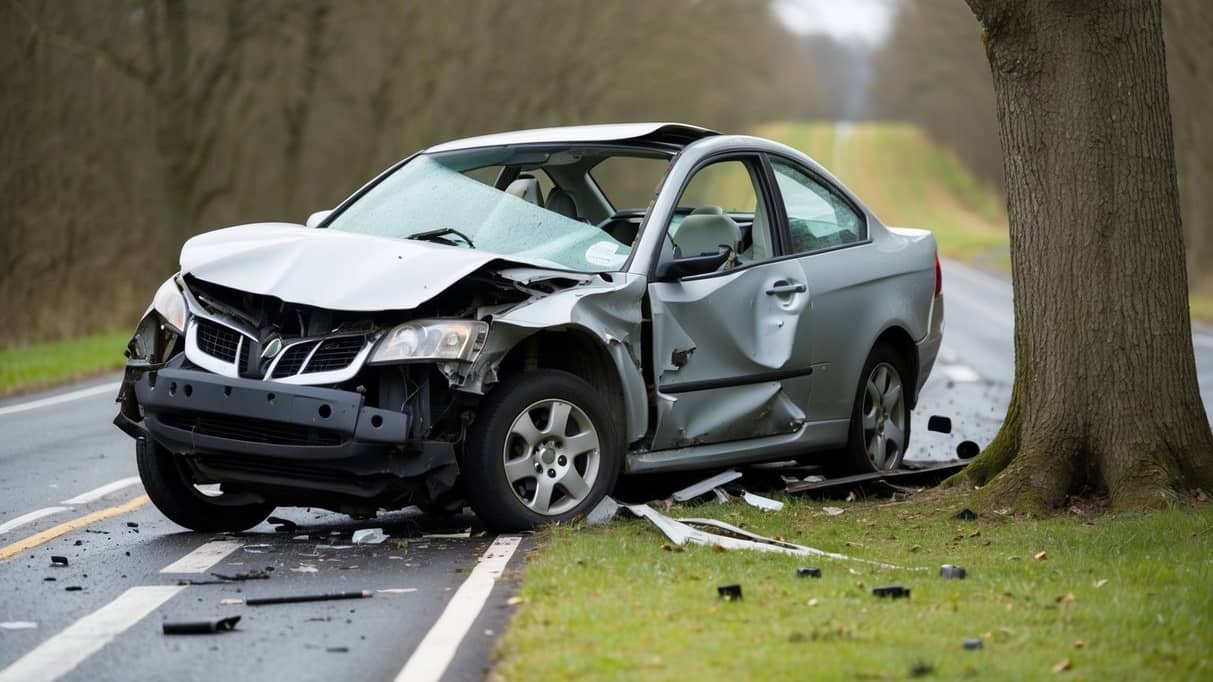Exploring the Dangers and Legal Consequences of Distracted Driving

Focus on your driving!
Distracted driving remains a pressing issue on the roads today, contributing significantly to traffic accidents.
By The Editors
Thu, May 15, 2025 04:51 AM PST
Engaging in activities such as texting, talking on the phone, or adjusting the radio diverts attention away from the critical task of driving. The consequences of distracted driving can be severe, both in terms of human life and legal ramifications.
Understanding the legal implications is crucial for drivers. Many jurisdictions have established strict laws against distracted driving, with penalties ranging from hefty fines to license suspension. Offenders not only risk their safety but can also face criminal charges if their actions lead to accidents or injuries.
Awareness of these dangers and consequences can prompt individuals to reconsider their driving behavior. Making a conscious effort to avoid distractions while behind the wheel is essential for ensuring personal safety and compliance with the law.
Understanding Distracted Driving
Distracted driving poses significant risks on the road. It is essential to understand its definition and types, as well as the alarming statistics surrounding its prevalence.
Definition and Types of Distracted Driving
Distracted driving involves any activity that diverts attention from driving. This can include numerous behaviors:
- Visual Distractions: Taking eyes off the road, such as looking at a phone or GPS.
- Manual Distractions: Removing hands from the steering wheel, including adjusting radio settings or eating.
- Cognitive Distractions: Mental engagement with activities unrelated to driving, like daydreaming or talking to passengers.
Each type of distraction can impair a driver’s ability to react promptly, increasing the risk of accidents.
Statistics and Prevalence
According to the National Highway Traffic Safety Administration (NHTSA), in 2021, over 3,500 people died due to distracted driving incidents. Distracted driving is a leading factor in traffic crashes, with approximately 9% of fatal crashes attributed to this behavior.
- Age Groups: Young drivers aged 16-24 are the most affected, representing 40% of distracted driving fatalities.
- Texting and Driving: Texting increases crash risk by 23 times, making it particularly dangerous.
The prevalence of distractions is significant, with many drivers admitting to engaging in distracted behaviors despite being aware of the risks.
Legislation and Legal Framework
Distracted driving is increasingly recognized as a serious issue, leading to significant legislative action at both state and federal levels. Various laws and penalties are established to deter this behavior and provide legal recourse for victims.
State Laws and Federal Policies
States have implemented diverse laws targeting distracted driving, often focusing on mobile phone use. As of 2025, 48 states, along with Washington D.C. and Puerto Rico, have enacted laws restricting texting while driving. Some states extend these laws to encompass handheld phone use, while others encourage hands-free devices.
Federal policies, such as the Highway Traffic Safety Administration's (NHTSA) initiatives, complement state laws. They emphasize public awareness campaigns and funding for state enforcement programs. Each state's approach may differ, reflecting local attitudes toward distracted driving. Car wreck attorneys Hipskind & McAninch often reference these variations when advocating for victims.
Penalties for Distracted Driving Offenses
Penalties for distracted driving vary widely by jurisdiction. Most common outcomes include fines, points on the driver's license, and increased insurance premiums. For example, texting while driving can result in fines ranging from $20 to $500, depending on the state.
In some cases, repeated offenses may lead to harsher penalties, such as license suspension or mandatory driving courses. Additionally, distracted driving can lead to civil liability. Victims of accidents caused by distracted drivers may seek compensation through lawsuits, which car wreck attorneys frequently handle. Legal consequences help hold offenders accountable and can deter future incidents.
Impacts of Distracted Driving
Distracted driving has significant repercussions on both road safety and individual legal standing. Understanding these impacts can help highlight the importance of focused driving.
On Road Safety
Distracted driving contributes to a high proportion of accidents on the roads. It diverts attention away from the critical task of driving, leading to slower reaction times and increased likelihood of collisions.
Key Statistics:
- Approximately 391,000 injuries occur annually due to accidents involving texting while driving.
- Studies indicate that texting can increase crash risk by 23 times.
Visual distractions, such as checking GPS or interacting with passengers, can be just as hazardous. This loss of attention endangers not only drivers but also passengers, pedestrians, and cyclists.
Personal Legal Consequences
Engaging in distracted driving can lead to serious legal ramifications. Many jurisdictions impose fines and points on driving records for violations, such as using a mobile phone without hands-free capabilities.
Potential Legal Outcomes:
- Serious fines ranging from $100 to $500, depending on the state.
- Increased insurance premiums following violations can also occur.
In more severe cases, distracted driving can result in negligence lawsuits. Car wreck attorneys often handle cases where victims seek compensation for damages incurred. This legal pathway underscores the financial and personal stakes of maintaining focus while driving.
Prevention and Safety Measures
Addressing distracted driving requires a multi-faceted approach that includes educational initiatives and technological advancements. Implementing both strategies can significantly reduce incidents on the road.
Educational Programs
Educational programs are crucial in raising awareness about the dangers of distracted driving. Schools and community organizations often implement curricula that focus on the risks involved.
These programs may include presentations, workshops, and simulations. Participants learn about statistics related to distracted driving and hear testimonials from accident survivors.
Additionally, peer-led discussions can be effective in promoting responsible driving behaviors. Engaging younger drivers through relatable content can create lasting impressions and encourage safer habits.
Technological Solutions
Technology plays a vital role in combating distracted driving. Many modern vehicles come equipped with advanced safety features designed to minimize distractions.
Examples of these technologies include:
- Hands-free calling systems
- Lane departure warnings
- Collision detection systems
Smartphone apps can also help drivers by blocking notifications while the vehicle is in motion. Some apps allow customization, so users can set driving modes that restrict access to calls and texts.
By leveraging these technologies, drivers can maintain their focus on the road, significantly reducing the likelihood of accidents related to distracted driving.






